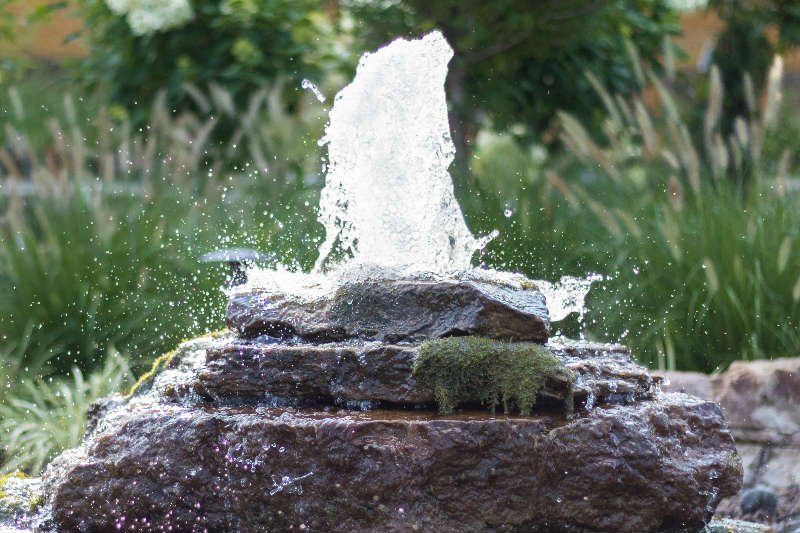Power flows where attention goes
Awareness and attention are two aspects of one element.
Attention gushes/flows out from awareness, similar to the way water gushes out from a spring.
Your awareness is the source of your power, attention is your power.
Where you aim your attention, that is where your power flows – that’s where something happens.
You cannot be aware without attention, and you cannot pay attention without awareness.

Most of us really want the attention of others. Children want it from parents, we want it from our partners and friends, it’s the power that observers are giving to performers. The attention of others is also the power that is feeding our ego… We could buy the attention of others. We are often fighting or going to war for the attention of others…
Attention can have a quality similar to water… Water can be focused strongly as a waterjet, which can easily cut through steel. It can flow smoothly like a river or flow like a shower… Water can expand as steam, or it can be everywhere in the air like invisible humidity…
Attention can be used in any number if3 ways: to think, to move, to feel, to observe, to visualise, to flow, to play, to recall, to pray, to heal etc.
Each task needs a different tool: a different set of awareness and a different quality of attention.
Our awareness and attention are not so straightforward; we cannot simply deposit them into a dual system. In order to explain it, we simplify them in a spectrum between focused and expanded awareness, from which gush forth focused and expanded attention.
Nowadays, when we use the term ‘attention’, we usually mean ‘focused attention’…
Focused awareness – logical thinking is a great tool for tactics, plans and strategy, but not the best tool for initial reactions. In focused awareness, we perceive the world in a more linear fashion, in fragments.
Focused awareness is analysing the past and planning for the future.
In expanded awareness we are not thinking, we just flow at the moment. Therefore we are more sensitive, we process information quicker from our senses (we feel more and see kinetic energy, rhythm, we have better spatial awareness), we, therefore, can be more effective at multitasking. Our reactions are quicker, natural – more instinctive. We are opening up our intuition.
Expanded awareness is great for creative activities, e.g. dance, play, making love, combat, sports etc.
In expanded awareness, we perceive the world holistically as one unit.
The difference between holistic and fragmental perception is well demonstrated in this illustration: the difference between bitmap and vector method on how to make a circle…
An active reaction is created by focused awareness, taking place mainly in the neocortex of the brain. It demands a lot of attention. Active reactions are planned, they, therefore, are delayed and broken. In an active mode, it is much harder to accept things that were not planned.
A passive spontaneous reaction is usually created by expanded awareness, subconsciously, by the intelligence of the body, making more use of the reptilian brain. Passive reactions are not planned it, therefore, allows us to accept things that weren’t planned. We have to reach a certain level of passivity to be able to harmonise and synchronise with randomly changing surroundings. A passive reaction doesn’t demand a lot of attention, but is much quicker, smoother and is more precise.
The passive reaction is created without intention.
In today’s civilisation, we are working much more with focused attention, e.g. we are making plans, reading, writing, thinking, analysing, watching TV etc.
It is important to achieve a balance in order to spend more time in expanded awareness. Just to let our attention passively flow.
Expansion and focused awareness are different tools. The first step, to be free to use the right tool for each task, is to be able to switch between expanded and focused awareness.
Our attention can flow into any part of our bodies… To the head, the heart, the tan-tien, hand, finger, hair, organs etc.
Of course, our attention can also flow out. It can flow to a shouting man, a flying ball, to hear music, to smell the wine, to taste the food, to feel the structure and temperature of the skin, wind in the hair etc.
Paradoxically, we are not fully aware of where our attention flows, because a lot of our awareness attention flows somewhere, subconsciously. Even when we are sleeping, we still have some awareness.
Our awareness and attention usually flow somewhere between the conscious and the subconscious. We can control the depth of our focus.
To know thyself is important. In addition to static meditation, practice dynamic meditations, where you haven’t any plan, you just enjoy the moment, your body and mind just passively flow…
Awareness of movement can be developed to a depth or spread to multitasking.
Awareness of movement allows you to move quicker; be more precise and efficient.
With a deeper awareness time flows relatively slower – you can take in and process more information, and do more things at the same time.
You can observe your awareness, and where it directs and channels your attention, but to observe your awareness also demands some of your attention.
We can work with the attention of others. We can attract their attention to show them something, or hide something.
We can take somebody’s attention and redirect it somewhere else.
We can feel the attention and intention of other people even without utilising the eyes (especially if the person is staring really strongly – focused attention).
We can minimise our attention and intention to be more ‘invisible’, thereby not attracting the attention of others.